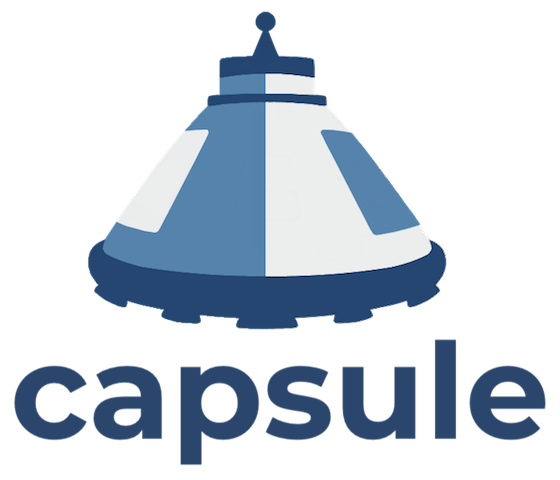Capsule helps to implement a multi-tenancy and policy-based environment in your Kubernetes cluster. It is not intended to be yet another PaaS, instead, it has been designed as a micro-services-based ecosystem with the minimalist approach, leveraging only on upstream Kubernetes.
Kubernetes introduces the Namespace object type to create logical partitions of the cluster as isolated slices. However, implementing advanced multi-tenancy scenarios, it soon becomes complicated because of the flat structure of Kubernetes namespaces and the impossibility to share resources among namespaces belonging to the same tenant. To overcome this, cluster admins tend to provision a dedicated cluster for each groups of users, teams, or departments. As an organization grows, the number of clusters to manage and keep aligned becomes an operational nightmare, described as the well know phenomena of the clusters sprawl.
Capsule takes a different approach. In a single cluster, the Capsule Controller aggregates multiple namespaces in a lightweight abstraction called Tenant, basically a grouping of Kubernetes Namespaces. Within each tenant, users are free to create their namespaces and share all the assigned resources while the Capsule Policy Engine keeps the different tenants isolated from each other.
The Network and Security Policies, Resource Quota, Limit Ranges, RBAC, and other policies defined at the tenant level are automatically inherited by all the namespaces in the tenant. Then users are free to operate their tenants in autonomy, without the intervention of the cluster administrator. Take a look at following diagram:
Leave to developers the freedom to self-provision their cluster resources according to the assigned boundaries.
Share a single cluster with multiple teams, groups of users, or departments by saving operational and management efforts.
Leverage Kubernetes Admission Controllers to enforce the industry security best practices and meet legal requirements.
Take control of the resources consumed by users while preventing them to overtake.
Provide multi-tenancy with a native Kubernetes experience without introducing additional management layers, plugins, or customized binaries.
Capsule is completely declarative and GitOps ready.
Assign to tenants a dedicated set of compute, storage, and network resources and avoid the noisy neighbors' effect.
Please, refer to the corresponding section in the project documentation for a detailed list of common use cases that Capsule can address.
Make sure you have access to a Kubernetes cluster as administrator.
There are two ways to install Capsule:
Ensure you have kubectl and kustomize installed in your PATH.
Clone this repository and move to the repo folder:
$ git clone https://github.com/clastix/capsule
$ cd capsule
$ make deploy
It will install the Capsule controller in a dedicated namespace capsule-system.
Use the scaffold Tenant and simply apply as cluster admin.
$ kubectl apply -f config/samples/capsule_v1alpha1_tenant.yaml
tenant.capsule.clastix.io/oil created
You can check the tenant just created as
$ kubectl get tenants
NAME NAMESPACE QUOTA NAMESPACE COUNT OWNER NAME OWNER KIND NODE SELECTOR AGE
oil 3 0 alice User 1m
Each tenant comes with a delegated user or group of users acting as the tenant admin. In the Capsule jargon, this is called the Tenant Owner. Other users can operate inside a tenant with different levels of permissions and authorizations assigned directly by the Tenant Owner.
Capsule does not care about the authentication strategy used in the cluster and all the Kubernetes methods of authentication are supported. The only requirement to use Capsule is to assign tenant users to the the group defined by --capsule-user-group option, which defaults to capsule.clastix.io.
Assignment to a group depends on the authentication strategy in your cluster.
For example, if you are using capsule.clastix.io, users authenticated through a X.509 certificate must have capsule.clastix.io as Organization: -subj "/CN=${USER}/O=capsule.clastix.io"
Users authenticated through an OIDC token must have
...
"users_groups": [
"capsule.clastix.io",
"other_group"
]in their token.
The hack/create-user.sh can help you set up a dummy kubeconfig for the alice user acting as owner of a tenant called oil
./hack/create-user.sh alice oil
creating certs in TMPDIR /tmp/tmp.4CLgpuime3
Generating RSA private key, 2048 bit long modulus (2 primes)
............+++++
........................+++++
e is 65537 (0x010001)
certificatesigningrequest.certificates.k8s.io/alice-oil created
certificatesigningrequest.certificates.k8s.io/alice-oil approved
kubeconfig file is: alice-oil.kubeconfig
to use it as alice export KUBECONFIG=alice-oil.kubeconfigLog in to the Kubernetes cluster as alice tenant owner
$ export KUBECONFIG=alice-oil.kubeconfig
and create a couple of new namespaces
$ kubectl create namespace oil-production
$ kubectl create namespace oil-development
As user alice you can operate with fully admin permissions:
$ kubectl -n oil-development run nginx --image=docker.io/nginx
$ kubectl -n oil-development get pods
but limited to only your own namespaces:
$ kubectl -n kube-system get pods
Error from server (Forbidden): pods is forbidden:
User "alice" cannot list resource "pods" in API group "" in the namespace "kube-system"
Please, check the project documentation for more cool things you can do with Capsule.
Similar to deploy, you can get rid of Capsule using the remove target.
$ make remove
-
Q. How to pronounce Capsule?
A. It should be pronounced as
/ˈkæpsjuːl/. -
Q. Can I contribute?
A. Absolutely! Capsule is Open Source with Apache 2 license and any contribution is welcome. Please refer to the corresponding section in the documentation.
-
Q. Is it production grade?
A. Although under frequent development and improvements, Capsule is ready to be used in production environments as currently, people are using it in public and private deployments. Check out the release page for a detailed list of available versions.
-
Q. Does it work with my Kuberentes XYZ distribution?
A. We tested Capsule with vanilla Kubernetes 1.16+ on private environments and public clouds. We expect it to work smoothly on any other Kubernetes distribution. Please, let us know if you find it doesn't.
-
Q. Do you provide commercial support?
A. Yes, we're available to help and provide commercial support. Clastix is the company behind Capsule. Please, contact us for a quote.



